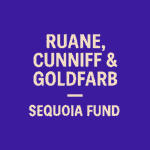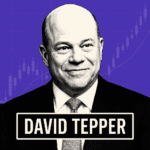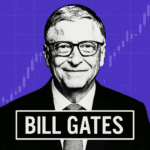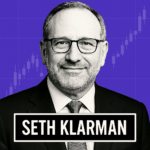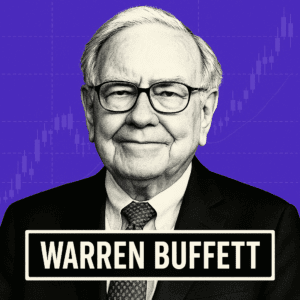
WARREN BUFFETT – BERKSHIRE HATHAWAY Q3 2025 PORTFOLIO
Berkshire Hathaway, a hedge fund managed by Warren Buffett, disclosed 41 security holdings in its Q3 2025 13F filing, with a total portfolio value of $267,334,501,955.
Warren Buffett’s Portfolio
As of Q3 2025, Warren Buffett’s Berkshire Hathaway portfolio demonstrates continued strategic evolution with aggressive trimming of major tech holdings and selective new additions. The total portfolio value increased to $267.3 billion across 41 positions, up from $257.5 billion in Q2. Most notably, Buffett added a landmark position in Alphabet (Google) while continuing to reduce Apple and Bank of America exposure. Below is a detailed overview of the latest positions and significant changes since Q2 2025.
Top Holdings
Portfolio Strategy Analysis
The addition of Alphabet (Google) as a $4.34 billion position represents one of the most significant strategic shifts in recent years. This marks Buffett’s first-ever investment in Google, demonstrating a willingness to embrace mature technology platforms with proven business models. The investment likely reflects recognition of Google’s transformation from a growth company to a cash-generating machine with durable competitive advantages in search, digital advertising, and cloud computing.
The sale of 41.8 million Apple shares in Q3 follows the 20 million share reduction in Q2, totaling 61.8 million shares trimmed over two quarters. This represents over $15 billion in proceeds and signals deliberate portfolio rebalancing. Despite these sales, Apple remains the largest holding at 22.69%, suggesting Buffett wants to maintain significant exposure while reducing concentration risk that had exceeded 25% earlier in the year.
Bank of America experienced its third consecutive quarter of reductions with 37.2 million shares sold in Q3. Combined with previous quarters, this represents over 63.5 million shares trimmed since early 2025. While BAC remains the third-largest holding at nearly 11% of the portfolio, the persistent selling suggests concerns about banking sector valuations or regulatory environment rather than fundamental business quality issues.
Chubb saw significant buying activity with 15.90% more shares added, bringing total allocation to 3.31%. This substantial increase in the property and casualty insurer demonstrates Buffett’s growing conviction in the insurance sector’s fundamentals beyond Berkshire’s own operations. The timing coincides with improving pricing power across the insurance industry.
While no new energy shares were purchased, both Chevron and Occidental Petroleum strengthened their portfolio positions through price appreciation. Combined energy exposure through these two positions now exceeds 11.7% of the portfolio, demonstrating sustained conviction in traditional energy fundamentals and potentially serving as an inflation hedge.
Other Notable Changes
Beyond the top holdings, Q3 2025 saw several other significant portfolio adjustments:
Amazon (AMZN) – The Q2 new position remained unchanged at 10 million shares, now valued at $2.2 billion (0.82% of portfolio). This stable holding suggests initial sizing may be complete.
DaVita (DVA) – Reduced by 4.84% with 1.6 million shares sold, bringing total position to $4.27 billion (1.60% of portfolio). This marks the first reduction in the dialysis services provider.
VeriSign (VRSN) – Significantly reduced by 32.36% with 4.3 million shares sold, suggesting either profit-taking or reduced conviction in the domain name registry business.
Domino’s Pizza (DPZ) – Increased by 13.22% with 348,000 shares added, demonstrating continued confidence in the pizza delivery franchise model.
Sirius XM (SIRI) – Increased by 4.20% with 5 million shares added to a $2.9 billion position, representing growing conviction in the satellite radio business.
Conclusion
Warren Buffett’s Q3 2025 portfolio reveals a historic strategic pivot with the landmark Alphabet investment representing his first-ever Google position. This $4.34 billion bet demonstrates Buffett’s evolution in evaluating technology businesses, now focusing on mature platforms with proven cash generation rather than avoiding tech entirely.
The aggressive trimming of Apple (41.8 million shares) and Bank of America (37.2 million shares) in Q3 continues multi-quarter trends toward reducing concentration risk and banking sector exposure. Despite these reductions, Apple remains dominant at 22.69% while BAC stays as the largest bank holding at nearly 11%.
Strategic additions to Chubb (up 15.90%) signal increased conviction in property and casualty insurance fundamentals, while strengthened Chevron and Occidental Petroleum positions demonstrate sustained energy sector confidence totaling over 11.7% of the portfolio.
With 41 positions totaling $267.3 billion, the Q3 2025 portfolio represents Buffett’s most significant strategic repositioning in years. The simultaneous addition of Alphabet while aggressively trimming Apple suggests a more nuanced technology investment philosophy—one that embraces mature tech platforms with durable competitive advantages while managing concentration risk in even the highest-quality holdings. This evolution positions Berkshire for sustained growth while maintaining the value-oriented, quality-focused principles that have defined Buffett’s investment approach for decades.
Berkshire Hathaway Portfolio Analysis
Based on 13F filing for reporting period: Q3, 2025
Portfolio Manager
Warren Buffett
Filing Date
November 14, 2025
Total Value
$267,334,501,955
Number of Positions
41
Portfolio Allocation
Holdings Breakdown
| Rank | Company Name | % of Portfolio | Q3 Activity | Ticker | Shares | Market Value ($) |
|---|
